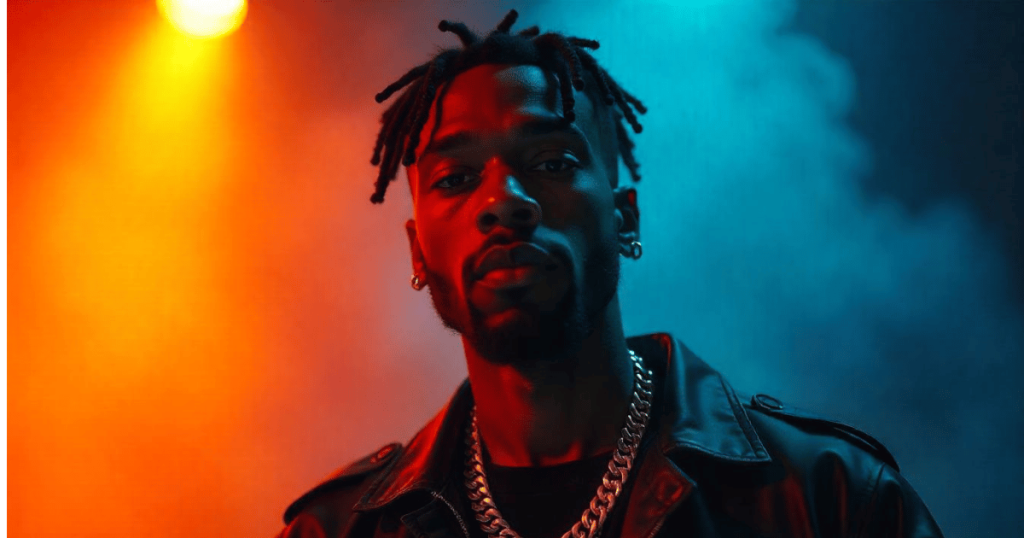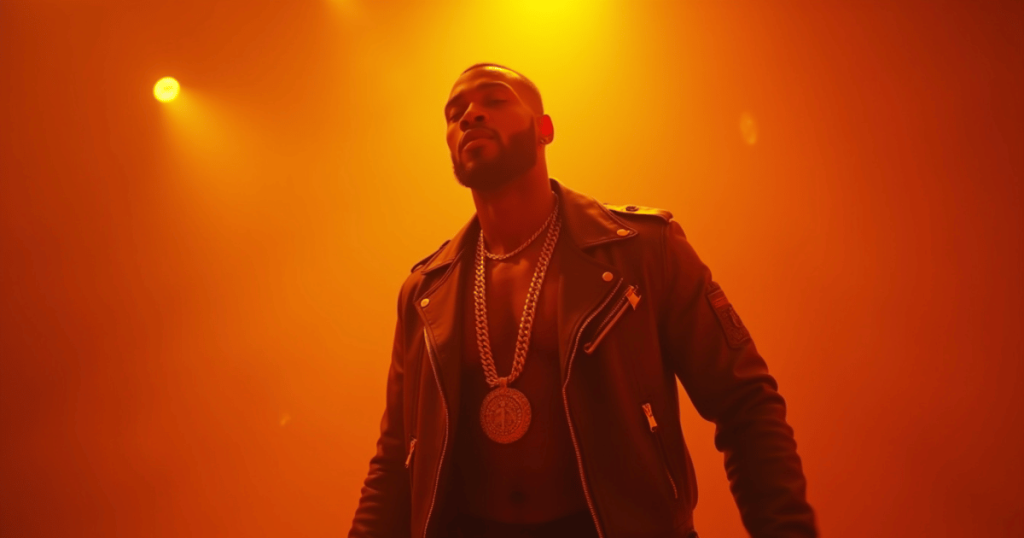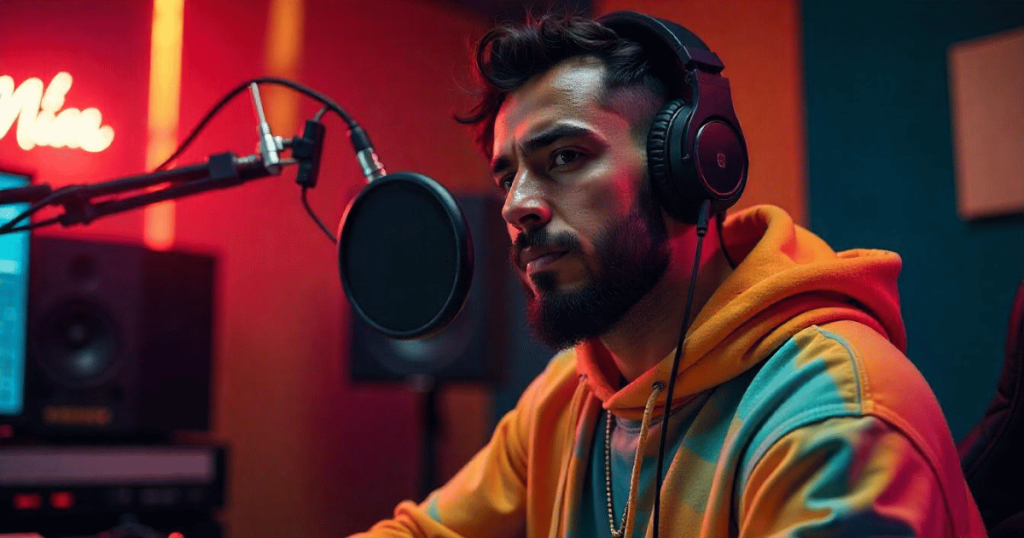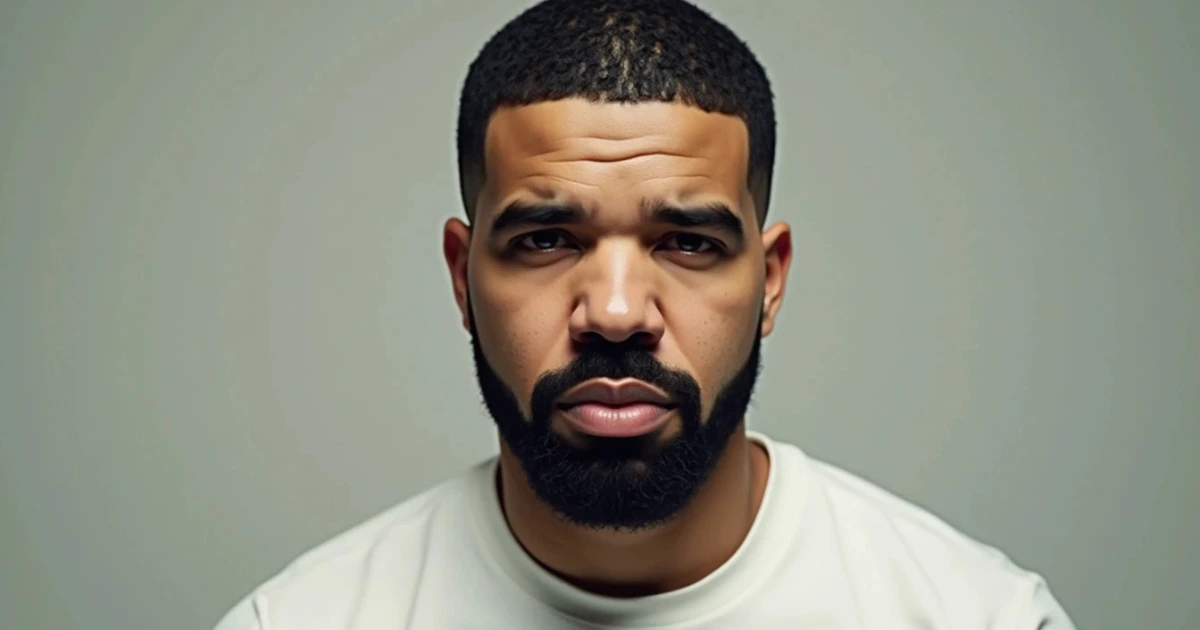In today’s rapidly evolving music landscape, one phenomenon has taken the beat-making world by storm: “Drake type beats.” From underground producers to top-charting artists, these distinctive instrumental backdrops have come to symbolize a unique blend of emotion, minimalism, and innovation that Drake himself helped popularize. In this deep-dive article, we explore the origins, characteristics, and influence of Drake type beats. We’ll also examine how these beats have shaped modern hip-hop, the nuances of their production, and what the future might hold for producers who aspire to craft the next wave of chart-topping instrumentals.
Introduction
The music industry is in a constant state of evolution, with genres colliding, trends emerging, and new sounds captivating audiences worldwide. Among these trends, “Drake type beats” have carved out a niche that transcends simple instrumentation—they capture an ethos of introspection, emotional honesty, and minimalistic production that resonates with a wide array of listeners. For a broader view of the musical landscape and additional beat styles, visit our Music page.
Named after one of the most influential artists of our time, Drake, these beats are more than just background music; they’re a statement. They symbolize a blend of vulnerability and cool detachment, merging soft, atmospheric instrumentals with hard-hitting, trap-inflected rhythms. For aspiring producers and artists alike, mastering the Drake type beat has become almost a rite of passage in the modern digital age.
In this article, we journey through the history, key elements, and cultural significance of Drake type beats, offering insights for producers, artists, and fans. We delve into the technical aspects, share production tips, and forecast future trends, ensuring that by the end of this piece, you have a thorough understanding of what makes these beats unique and influential.
The Rise of Drake and His Musical Influence
Drake’s Journey to Stardom
Drake, born Aubrey Drake Graham, first gained widespread recognition as an actor on the Canadian teen drama Degrassi: The Next Generation. However, his transition into music was nothing short of revolutionary. His debut studio album, Thank Me Later (2010), marked the beginning of a new era in hip-hop, one that blurred the lines between rap, R&B, and pop.
Drake’s musical style is characterized by its smooth flow, catchy hooks, and an emotional depth that resonates with millions. His ability to express vulnerability while maintaining mainstream appeal helped him stand out in an industry that was traditionally dominated by macho posturing and aggressive lyrics. This blend of introspection and commercial sensibility has since defined the “Drake sound.”
Shaping Modern Hip-Hop
Drake’s influence extends far beyond his own discography. His success has spurred a wave of artists and producers who seek to emulate his style—crafting beats that encapsulate the same mood, tone, and emotional palette. The term “Drake type beats” has emerged as a genre in its own right, one that captures the essence of his sound through instrumental music.
Drake’s approach to music production involves a careful balance of atmospheric soundscapes, minimalist percussion, and layered melodies. This formula has not only redefined what it means to be a hip-hop producer but has also paved the way for a more nuanced, emotionally resonant form of rap.
Cultural Impact and the OVO Brand
The success of Drake’s brand, OVO (October’s Very Own), further cemented his influence on the industry. OVO Sound, his record label, has become synonymous with high-quality, trendsetting music that pushes the boundaries of genre and style. The aesthetics and vibe of OVO have influenced everything from fashion to graphic design, creating a cultural ecosystem that goes far beyond music.
Producers around the world have embraced the OVO aesthetic, incorporating its smooth, introspective qualities into their work. This phenomenon has led to the proliferation of online platforms and beat marketplaces where “Drake type beats” are not only a trend but a highly sought-after commodity.
Understanding Drake Type Beats
Defining Characteristics
Drake type beats are not defined by a single formula but rather by a collection of sonic elements and production techniques that evoke a specific mood. Here are some key characteristics:

- Atmospheric Soundscapes: These beats often feature ambient pads, subtle synths, and reverb-laden textures that create a sense of space and introspection.
- Minimalist Percussion: Unlike the bombastic drums of traditional trap, Drake type beats tend to employ a more restrained approach to percussion. The beats are clean, with carefully placed snares and hi-hats that complement the overall vibe.
- Melodic Emphasis: Melodic lines, whether played on a piano, guitar, or synthesizer, are central to the sound. These melodies are often repetitive and hypnotic, adding to the meditative quality of the music.
- Emotional Resonance: At their core, these beats are designed to evoke a range of emotions—from melancholy and introspection to optimism and resilience.
Emotional and Sonic Qualities
What sets Drake type beats apart is their ability to evoke a specific emotional response. They often serve as the perfect backdrop for lyrics that deal with themes of love, loss, ambition, and personal growth. The music creates an immersive experience that allows the listener to feel every nuance of the emotion conveyed by the artist.
The sound design in these beats plays a crucial role in this emotional storytelling. Producers often use subtle sound effects, such as vinyl crackles, distant vocal samples, or ambient nature sounds, to add layers of depth and texture. This careful attention to sonic detail is what transforms a simple instrumental into a captivating musical journey.
Historical Evolution of Drake Type Beats
From Early Hip-Hop to Modern Trap
The evolution of Drake type beats can be traced back to the broader changes in hip-hop and R&B over the past few decades. Early hip-hop, characterized by its raw, sample-based production, laid the groundwork for the experimental approaches seen today. As technology advanced, producers began to explore new ways to create music that was both innovative and commercially viable. To explore the raw energy and innovative soundscapes of trap music, check out our dedicated section on Trap Beats. To better understand the specific influence of trap music on modern production styles, read our detailed discussion on What is Trap Music: From Atlanta Streets to Global Phenomenon.
With the advent of trap music in the 2000s, a new sound emerged—one that combined hard-hitting drums with synthesized melodies and a focus on rhythmic intricacy. While trap music often carried a more aggressive tone, the softer, more introspective beats associated with Drake provided a counterpoint that resonated with a wider audience.
Drake’s breakthrough came at a time when listeners were craving a more personal, emotionally charged form of hip-hop. His unique blend of singing and rapping, set against minimalist yet lush instrumentals, redefined the sound of contemporary rap. As a result, a whole new subgenre of beats emerged, inspired by his style and approach.
Cultural Shifts and Production Trends
The digital age has democratized music production, allowing producers from all corners of the globe to share their work online. Platforms such as YouTube, SoundCloud, and BeatStars have become hubs for creators looking to break into the industry. Within these spaces, Drake type beats have flourished, as producers experiment with new ideas and build communities around shared aesthetic values.
This cultural shift has also influenced the production techniques used in creating these beats. The availability of advanced digital audio workstations (DAWs), virtual instruments, and sample libraries has enabled producers to craft highly detailed and layered soundscapes without the need for expensive studio time. In many ways, the rise of Drake type beats reflects a broader trend toward accessibility and innovation in music production.
The online community has played a significant role in shaping the sound of Drake type beats. Forums, social media groups, and YouTube channels dedicated to beat-making have created an environment where ideas are shared, refined, and celebrated. This collaborative spirit has not only accelerated the evolution of the genre but also established a new model for how music is created and consumed in the 21st century.
Key Producers and Innovators
Influence of Toronto and the OVO Sound
At the heart of the Drake type beat phenomenon is the city of Toronto, a cultural melting pot that has given rise to some of the most innovative sounds in modern music. The OVO Sound team, which includes producers like Noah “40” Shebib, has been instrumental in defining the sonic landscape associated with Drake. Their innovative use of ambient soundscapes, understated percussion, and emotional melodies has set the template for countless producers around the world.

The Toronto sound is characterized by its focus on mood and atmosphere rather than overt complexity. This approach has resonated with listeners, who are drawn to its simplicity and emotional depth. The influence of Toronto’s diverse musical culture—ranging from Caribbean rhythms to European electronic music—can be heard in the eclectic, yet cohesive, sound of Drake type beats.
Independent Producers and Online Culture
While established figures like Drake and his close collaborators have undoubtedly played a major role in popularizing this style, the true explosion of Drake type beats in the digital era is largely due to independent producers. These creatives, often starting out from modest home studios, have leveraged online platforms to showcase their talent and connect with audiences worldwide.
Producers on platforms such as YouTube and SoundCloud often label their instrumentals as “Drake type beats” to attract artists looking for that signature sound. This self-identification has helped create a distinct category within the beat-making community, fostering a sense of identity and shared purpose among creators. The democratization of music production has allowed a diverse range of voices to contribute to the evolution of this genre, making it one of the most dynamic and exciting fields in modern music.
Anatomy of a Drake Type Beat
To truly understand the allure of Drake type beats, it’s essential to break down their components and examine the techniques behind their production.
Instrumentation and Sound Design
1. Ambient Pads and Synths:
A defining feature of Drake type beats is the use of ambient pads that create a lush, atmospheric backdrop. These layers are often crafted using soft synths, digital pianos, or even reprocessed samples. The goal is to evoke a sense of space and introspection.
2. Sparse Percussion:
Unlike more aggressive trap beats that rely on heavy, intricate drum patterns, Drake type beats often use minimalistic percussion. A clean, crisp snare, subtle hi-hats, and carefully placed kicks form the backbone of the rhythm. This sparse approach leaves plenty of room for the melodies and vocals to breathe.
3. Melodic Lines:
Central to these beats are melodic elements that often come from pianos, guitars, or synthesizers. These melodies tend to be simple yet evocative, designed to loop in a hypnotic manner that enhances the overall mood. The melody is the emotional anchor of the track, guiding the listener through various sonic landscapes.
4. Layering and Texture:
Effective sound design in Drake type beats often involves layering multiple elements to create a rich, textured sound. This might include subtle background effects like vinyl crackles, distant vocal samples, or reverb-soaked ambient sounds that add depth without cluttering the mix.
Rhythm, Tempo, and Dynamics
Drake type beats typically adopt a mid-tempo rhythm that balances between introspection and rhythmic drive. The tempo often ranges from 70 to 90 BPM, though variations exist depending on the desired emotional impact. The rhythmic structure is intentionally straightforward, allowing for a relaxed yet compelling groove that invites both introspection and head-nodding.
Producers often experiment with dynamics—varying the volume and intensity of different elements throughout the track—to create an engaging listening experience. This dynamic interplay ensures that even within a minimalist framework, the beat never feels static or monotonous.
Mixing Techniques and Effects
Mixing is crucial in achieving the signature sound of Drake type beats. Producers focus on maintaining clarity and separation between elements, often using techniques such as:
- Sidechain Compression: To create space between the kick and the melodic elements, sidechain compression is commonly employed. This technique allows the kick drum to punch through the mix without overwhelming the softer ambient layers.
- Reverb and Delay: Thoughtful use of reverb and delay effects contributes to the spacious, atmospheric quality of the beat. Producers use these effects to simulate a sense of depth, as if the music were being performed in a vast, echoing space.
- EQ and Filtering: Careful equalization helps to carve out space for each instrument. Filtering out unwanted frequencies ensures that the overall mix remains balanced and uncluttered, allowing the core elements to shine through.
- Stereo Imaging: Utilizing stereo imaging techniques enhances the spatial quality of the beat. Producers spread instruments across the stereo field, creating a wider, more immersive sound that draws the listener in.
The Role of Lyrics and Vocal Delivery
While the instrumental is the heart of a Drake type beat, the way artists choose to layer vocals and lyrics over these beats is what ultimately transforms them into complete songs.
Vulnerability and Introspection
Drake’s lyrical style is characterized by its honesty and introspection. His willingness to explore personal themes—be it heartbreak, success, or the complexities of modern relationships—has set a new standard for authenticity in hip-hop. When paired with a Drake type beat, these lyrical themes are amplified, creating an emotional synergy that resonates with listeners on a deeply personal level. To see how instrumental versatility can fuel spontaneous creativity, check out our insights on Freestyle Rap Beats.
The minimalist instrumental backdrop provides the perfect canvas for storytelling. The simplicity of the beat allows the artist’s voice and the emotion behind the lyrics to take center stage. This is why many artists who work with Drake type beats often opt for lyrics that are reflective, narrative-driven, and laced with a sense of vulnerability.
Simplicity vs. Complexity in Songwriting
One of the fascinating aspects of Drake type beats is their ability to support both simple and complex lyrical structures. The straightforward nature of the production can accommodate catchy, repetitive hooks as well as intricate verses that explore nuanced themes. This versatility has made Drake type beats a favorite among a diverse range of artists—from up-and-coming rappers to seasoned veterans.
The balance between simplicity in production and complexity in lyrical delivery creates a dynamic interplay. It encourages artists to experiment with varying flows, emotional cadences, and storytelling techniques. In doing so, they contribute to the ongoing evolution of the genre, continually pushing the boundaries of what is possible within a minimalist framework.
SEO and Market Trends: Why Drake Type Beats Dominate Online
Digital Platforms and Beat Marketplaces
The explosion of digital media has transformed how music is produced, distributed, and consumed. Platforms like YouTube, SoundCloud, and BeatStars have democratized access to music production, enabling independent producers to reach a global audience with minimal upfront investment. Within this digital ecosystem, Drake type beats have carved out a lucrative niche. For a more comprehensive understanding of how these instrumentals fit within the broader spectrum of rap production, check out our in-depth Rap Beats Ultimate Guide.

Many producers tag their instrumentals as “Drake type beats” to optimize for search engines and attract a specific audience. This keyword strategy has proven to be incredibly effective. Artists searching for beats with that signature sound can quickly locate a vast library of instrumentals tailored to their needs. As a result, the market for Drake type beats has grown exponentially, with thousands of producers competing to capture the attention of aspiring vocalists and established artists alike. For additional context on how rap beats have evolved over time, check out our comprehensive article on The Evolution of Rap Beats from the Bronx to the Global Stage.
Social Media and Viral Success
Social media platforms play a significant role in the popularity of Drake type beats. Viral videos, remix challenges, and user-generated content often feature these instrumentals, further fueling their spread. Memes, short clips, and even full-length songs built on Drake type beats circulate widely, creating a feedback loop that drives further interest and production in the genre.
The community-driven nature of social media means that trends can evolve rapidly. Producers who are quick to adapt and experiment with new ideas can capitalize on emerging trends, ensuring that their work remains fresh and relevant. This constant innovation is one of the reasons why Drake type beats continue to dominate the online space.
Tips for Producers: Creating Your Own Drake Type Beat
For aspiring producers, mastering the art of crafting a Drake type beat can open up a world of creative opportunities. Here are some actionable tips and techniques to help you get started. Discover more about the foundational sounds that shape modern rap by exploring our collection of Hip-Hop Beats.
Software and Tools of the Trade
- Digital Audio Workstations (DAWs):
Industry-standard DAWs such as FL Studio, Ableton Live, and Logic Pro X are excellent choices for producing Drake type beats. These platforms offer a range of features and plugins that allow you to experiment with sound design, layering, and mixing. - Virtual Instruments and Synths:
Invest in high-quality virtual instruments that emulate the sounds commonly found in Drake type beats. Look for soft synths that produce lush pads, digital pianos that offer realistic key sounds, and sample libraries that include atmospheric textures. - Drum Kits and Percussion Samples:
Curate a collection of clean, high-quality drum samples that can be used to craft minimalist percussion. Focus on snares, kicks, hi-hats, and claps that have a crisp, clear sound, ideal for creating the understated rhythms characteristic of this genre.
Step-by-Step Production Techniques
- Start with a Mood Board:
Before diving into production, create a mood board that captures the emotional tone you want to evoke. Consider colors, imagery, and even other songs that inspire you. This can help guide your sound design decisions. - Lay Down the Foundation:
Begin by establishing a simple chord progression or melodic loop. This will serve as the backbone of your beat. Experiment with different progressions until you find one that resonates emotionally. - Build the Percussion:
Layer your drum samples carefully. Start with a subtle kick and snare pattern, then add hi-hats and other percussion elements gradually. Keep the rhythm sparse, ensuring that each element has room to breathe. - Incorporate Atmospheric Elements:
Add ambient pads, synths, or sampled textures that enhance the mood. Use reverb and delay effects to create a sense of space and depth. This step is crucial for achieving the signature “dreamy” quality of Drake type beats. - Refine the Mix:
Once your core elements are in place, spend time on the mixing process. Use EQ to carve out frequencies, sidechain compression to create space between the drums and melodies, and stereo imaging to widen the soundstage. - Experiment and Iterate:
Don’t be afraid to experiment with different sounds, effects, and arrangements. Sometimes, unexpected tweaks can lead to a breakthrough moment that elevates your beat from good to great.
Collaboration and Networking
The music production community thrives on collaboration. Engage with other producers, share your work on online forums, and seek constructive feedback. Networking can open doors to new ideas, collaborations, and even opportunities to have your beats featured by established artists.
Social media platforms, beat marketplaces, and local music communities are all excellent venues for networking. By actively participating and sharing your knowledge, you not only improve your craft but also contribute to the broader evolution of the genre. For a broader perspective on the genre and production techniques, explore our extensive guide on Rap Beats.
Case Studies: Analyzing Iconic Drake Type Beats
To further illustrate the impact and craftsmanship behind Drake type beats, let’s examine a few case studies that have defined the genre.

“Marvins Room” and Its Legacy
Drake’s “Marvins Room” is widely regarded as one of the defining tracks that popularized the introspective, minimalist sound that characterizes Drake type beats. The song’s subdued instrumentation, characterized by its ambient textures and understated drum patterns, perfectly encapsulates the mood of vulnerability and late-night introspection.
- Production Techniques:
The beat relies on a sparse arrangement, with a focus on space and atmosphere. The use of reverb and delay creates a dreamy, almost hypnotic quality that complements Drake’s confessional lyrics. - Impact on the Industry:
“Marvins Room” influenced countless producers to explore a more emotional and minimalist approach to beat-making. Its success demonstrated that listeners craved authenticity and emotional depth, paving the way for a new generation of music that prioritized mood over sheer bravado.
“Hotline Bling” and Modern Production Trends
Another landmark track that embodies the essence of Drake type beats is “Hotline Bling.” Although more upbeat than some of Drake’s more introspective tracks, “Hotline Bling” incorporates many of the signature elements that have come to define the sound.

- Innovative Sound Design:
The track features a distinctive blend of tropical influences, ambient synths, and a minimalist drum pattern that creates a laid-back, yet irresistibly catchy vibe. The unconventional use of melody and rhythm in “Hotline Bling” has inspired producers to experiment with cross-genre influences while maintaining the core elements of the Drake aesthetic. - Cultural Influence:
“Hotline Bling” became a cultural phenomenon, spawning countless memes and remixes. Its success underscored the potential for Drake type beats to transcend traditional music boundaries and enter the realm of internet culture, where visual and auditory elements merge to create viral sensations.
The Future of Drake Type Beats and Music Production
Emerging Trends and Technologies
As technology continues to evolve, so too will the landscape of music production. Here are some emerging trends that could shape the future of Drake type beats:
- Artificial Intelligence and Machine Learning:
Advances in AI are already beginning to influence music production, from beat generation to mixing and mastering. In the near future, producers might use AI-driven tools to experiment with new sounds, analyze listener preferences, and even generate fresh variations of Drake type beats automatically. - Virtual Reality (VR) and Immersive Audio:
With the rise of VR and augmented reality platforms, there’s potential for the creation of immersive audio experiences. Imagine a virtual concert where the beat’s atmosphere shifts in real-time based on the audience’s emotional responses—a natural evolution for a genre already steeped in emotion and mood. - Blockchain and Decentralized Music Platforms:
The decentralization of music distribution via blockchain technology could empower independent producers by ensuring fair compensation and greater creative control. This could lead to a surge in the production of unique, high-quality instrumentals as more artists are able to monetize their work directly.
The Globalization of Beat Culture
The internet has played a pivotal role in transforming the music industry from a localized market to a global community. Producers from different parts of the world are now able to collaborate, share ideas, and create music that transcends cultural and geographic boundaries. This globalization of beat culture is leading to exciting cross-pollinations between genres, sounds, and traditions.
For Drake type beats, this means that while the core elements remain recognizable, they are increasingly being infused with international influences. From Afrobeat rhythms to Asian melodic sensibilities, the genre is evolving into a truly global phenomenon that celebrates diversity while maintaining its signature emotional core.
Producers worldwide are drawing inspiration from Drake’s innovative style, adapting it to fit their own cultural contexts. This cross-cultural exchange not only enriches the music but also expands its appeal, ensuring that Drake type beats continue to thrive in a dynamic and ever-changing musical landscape.
Conclusion
Drake type beats have emerged as a defining sound of modern music—a genre that blends emotional depth, minimalist production, and innovative sound design into a cohesive and influential musical style. From the early days of Drake’s groundbreaking releases to the current explosion of independent beat makers leveraging digital platforms, the evolution of this sound is a testament to the power of authenticity and innovation in music.
This comprehensive exploration has taken us through the origins, characteristics, and future prospects of Drake type beats. We’ve dissected their musical anatomy, examined influential tracks and producers, and provided actionable tips for aspiring beat makers. Whether you’re an artist looking for the perfect instrumental backdrop or a producer striving to create the next viral sensation, understanding the nuances of Drake type beats is essential in today’s music industry.
As the digital age continues to reshape how we create and consume music, the legacy of Drake type beats will undoubtedly persist, evolving with new technologies and global influences. Their ability to capture the complexities of modern emotions while remaining accessible and innovative ensures that they will remain a cornerstone of contemporary music for years to come.
FAQs
Q: What exactly are Drake type beats?
A: Drake type beats refer to instrumentals that capture the emotional, minimalist, and atmospheric style popularized by Drake. These beats typically feature ambient soundscapes, understated percussion, and evocative melodies designed to complement introspective lyrical themes.
Q: Which software is best for producing Drake type beats?
A: Many producers use DAWs like FL Studio, Ableton Live, and Logic Pro X to create Drake type beats. The choice largely depends on personal preference and familiarity with the interface.
Q: How can I make my beat stand out in a crowded market?
A: Focus on authenticity, experiment with layering and effects, and continuously refine your sound. Engaging with online communities for feedback and collaboration can also help elevate your work.
Q: Are Drake type beats only popular in hip-hop?
A: While deeply rooted in hip-hop, the atmospheric and minimalist qualities of Drake type beats have broad appeal, influencing pop, R&B, and even electronic music genres.
Q: What are some iconic tracks that define this style?
A: Tracks like “Marvins Room” and “Hotline Bling” are often cited as seminal works that helped establish the signature sound associated with Drake type beats.
Drake Type Beats Are Forever
Drake type beats represent more than just a passing trend—they are a testament to the power of emotional authenticity and minimalist production in modern music. As technology and global cultural exchange continue to influence the music industry, these beats are set to evolve further, pushing creative boundaries and inspiring a new generation of producers and artists.
By understanding the rich history, technical intricacies, and cultural impact of Drake type beats, both creators and fans can appreciate the depth and innovation that define this dynamic musical style. Whether you’re creating your own instrumentals, curating a playlist, or simply exploring new sounds, the world of Drake type beats offers endless possibilities for creative expression and emotional connection.
This comprehensive article aims to serve as both an educational resource and an inspiration for anyone interested in the world of Drake type beats. From its historical roots and cultural impact to actionable production tips and future trends, we hope this guide provides you with valuable insights and ignites your passion for exploring the art of beat-making.
Happy producing, and may your beats always resonate with the soulful, introspective vibe that has made Drake type beats a defining sound of our time.
